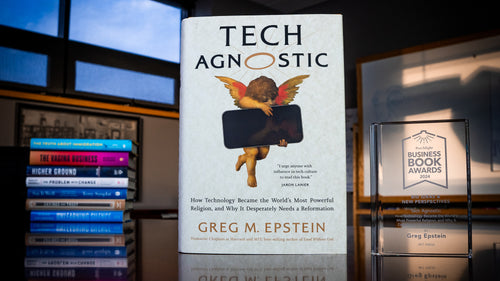Twitter Is Not a Strategy
 It looks like the bird on the cover of Twitter Is Not a Strategy is throwing up.
It looks like the bird on the cover of Twitter Is Not a Strategy is throwing up.
So, that is the first reason I love it, but there are so many others. It is challenging in the best of ways, forcing a fresh reconsideration of the marketing landscape, and defines a holistic approach to branding that takes social media into account, but doesn't put all eggs into that small and limited basket. I have just started diving into the book, but I am already hooked. To give you a taste of why, I have secured an excerpt from the publicist for you, one that takes you...
back to the future
Business is in flux. We suffer from disorientation wrought by technological change. Convention has been upended, and the digital world—a universe of bits and bytes, atomistic fragmentation that mocks tradition—is all variables, no constants. The rise of search engines and e-commerce has changed the balance of power between marketers and consumers. In May 2013 the Financial Times warned, "Algorithms threaten to end 'Mad Men' era of TV ads."1 Marketers, traditionally expert in product development and brand messaging, are now expected to decipher the meaning of statistics flowing from "machine-to-machine connectivity." And, given the dizzying pace of innovation occurring in cyberspace, reasonable people can ask: Across unsettled high-tech terrain, is the term digital expert an oxymoron?
CEOs look to the beast itself for salvation, intoxicated by the promise of new ways to maximize return on investment. A typical Business Insider headline: "Big Data Can Help Marketers Unlock up to $200 Billion." Buzzwords abound: CRM, cookies, digital ecosystems, experience optimization, platformization, algorithmic customization. The advertising world is experiencing unprecedented tumult. In the midst of a digital big bang, the advertising giant TBWA advocates disruption to its clients—that is, the unsettling of category convention to achieve competitive differentiation—whereas Publicis Worldwide wants brands to "lead the change." But what change and how?
Digital technology offers an infinite—and intimidating—range of ways for brands to engage with consumers. Connections can happen in real time. Brand communications can be transformed into brand journalism, with social network feeds providing consumers with relevant news as they go through their day. Branded apps—from Trailhead, The North Face's hiking path locator, to Allergycast, Johnson & Johnson's pollen index counter—transform passively received propositions into actual services. Brand promises flower into three- dimensional experiences.
The gamut of possibilities on this new commercial landscape is almost infinite, too broad for simplistic solutions. More important, the range of strategic imperatives confronted by various product categories is vast, and their needs are incompatible with a paint-by-numbers manual. One thing, however, is certain. Regardless of whether it is cola or computers being sold, the exploding array of digital channels presents increased opportunities to connect and confuse. Unless marketers master the timeless rules of brand building, they will get nowhere. In a hydra-headed digital world, the ultimate commandment of marketing still holds: Consistency is golden. Without long-term ideas behind it, the latest data-mining technique, augmented reality app, or search algorithm will be lost in the background buzz. Technological adventurism will never replace solid, coherent conceptual craftsmanship.
Ideas that stand the test of time are not quaint. Yes, the digital realm presents exciting challenges. But in that excitement it's too easy to forget about the consumers themselves—the desires that drive them and the role brands play in their lives. Remember, consumers too are often baffled by technological change. They are also drawn to brands with clear relevant propositions. Back in 1917 J. Walter Thompson, founder of the eponymous advertising agency, a company that celebrated its 150th anniversary in 2014, uttered these enduring words: "Somewhere in your product, or in your business, there is a 'difference,' an idea that can be developed into a story so big, so vital, and so compelling to your public as to isolate your product from its competitors, and make your public think of it as a distinctly different kind of product."
The dazzling new kaleidoscope of choice and the pressures of a hyperconnected, "always on" digital lifestyle has left more than a few people unsettled. This includes many marketers charged with leading some of world's greatest brands. In an effort to avoid being branded traditional or obsolete, advertising and marketing professionals fall prey to technological temptation. We furtively deploy the latest or hottest digital innovation without fully considering the basics of brand strategy or message consistency. Consumers end up more confused and less loyal.
In the midst of this disorientation, order can be especially re- assuring. The practice of marketing may be evolving, but the fundamentals of brand building are the same today as they were fifty years ago—the so-called golden age of advertising. Now more than ever, strong brands command price premiums. Now more than ever, strong brand ideas produce profit.
Only the brand idea—the long-term relationship between consumer and brand that remains steady yet evolves over time—can resolve the tension between traditional brand-building imperatives and the opportunities unleashed by technology and widespread consumer empowerment. Clearly defined yet dynamically interactive, it remains the sine qua non for both consistent messaging and engagement between consumers and brand. Traditional brand building is Top-down, articulated by the manufacturer and fueled by message clarity and deep understanding of consumers' motivations. The new opportunities offered by technology are bottom-up, unpredictable, on the street—of, by, and for the people. Brand building has existed since the dawn of the industrial revolution; the new opportunities are entirely twenty-first century. Yet they need to coexist within the same discipline.
Plenty of qualified authorities are available to guide readers through the challenges of modern marketing. I am neither a so- called digital expert nor a creative guru. But, as CEO of JWT Asia Pacific, I have had the good fortune of partnering with dozens of clients, both multinational and local, many of whom have succeeded in establishing strong brands in the world's most dynamic commercial environments—and some who have not. If I have learned one valuable lesson, it is this: Anxiety is not productive. Brands can "lead the change" only when their marketing executives have the confidence to go back to the future and rededicate themselves to timeless marketing principles.
Excerpted from Twitter Is Not a Strategy by Tom Doctoroff.
Copyright 2014 Tom Doctoroff
Reprinted by permission of Palgrave Macmillan, a division of St. Martin's Press, LLC.
All rights reserved
ABOUT THE AUTHOR
Tom Doctoroff is Asia CEO for J. Walter Thompson, and the author of Billions and What Chinese Want. A leading authority on marketing in China and Chinese consumer culture, he has more than15 years of experience in mainland China. He has appeared regularly on CNBC, NBC, Bloomberg, and National Public Radio, as well as Financial Times, Business Week, The Wall Street Journal and The New York Times. He has been a columnist for the China Economic Review and the Chinese magazine Global Entrepreneur.



